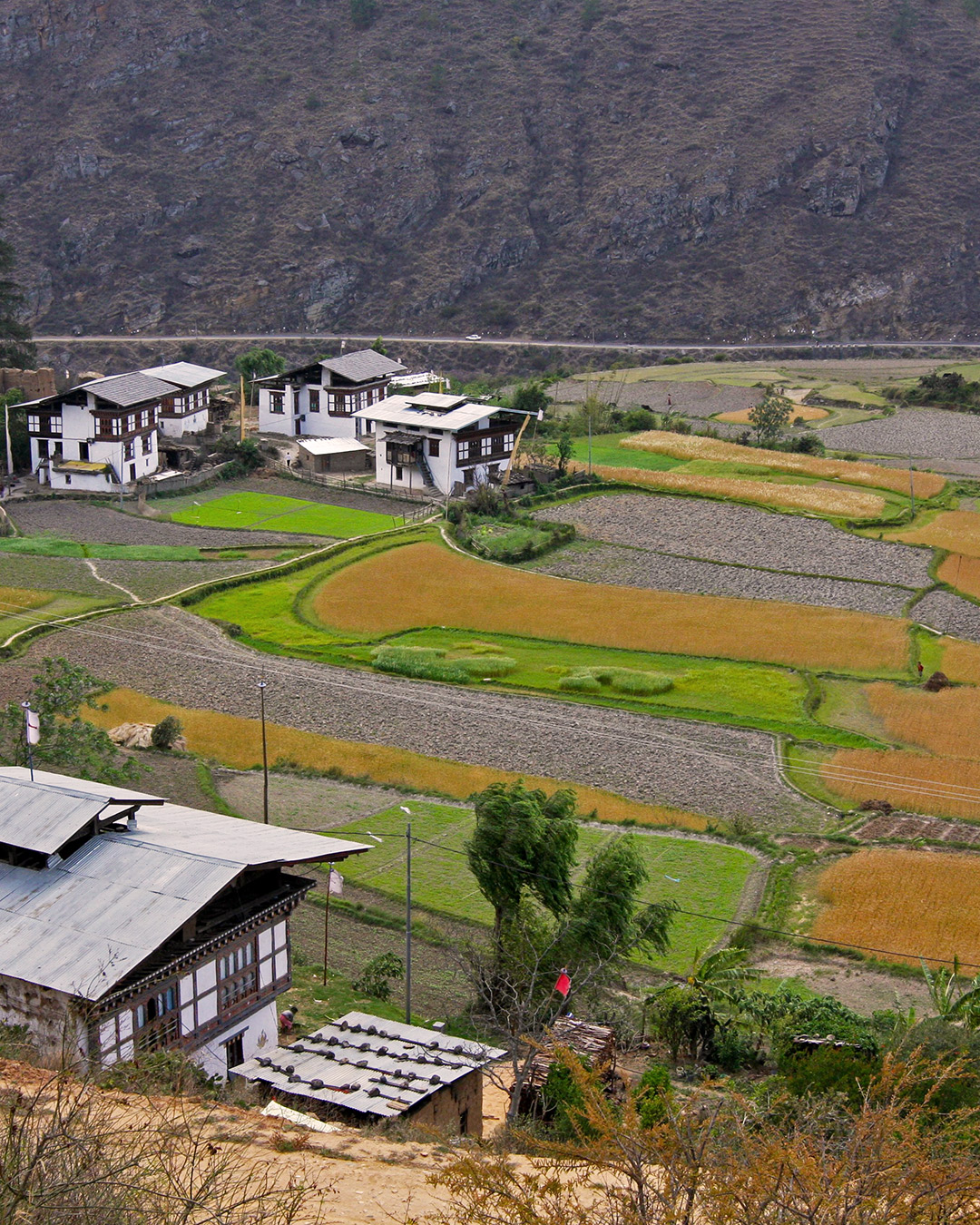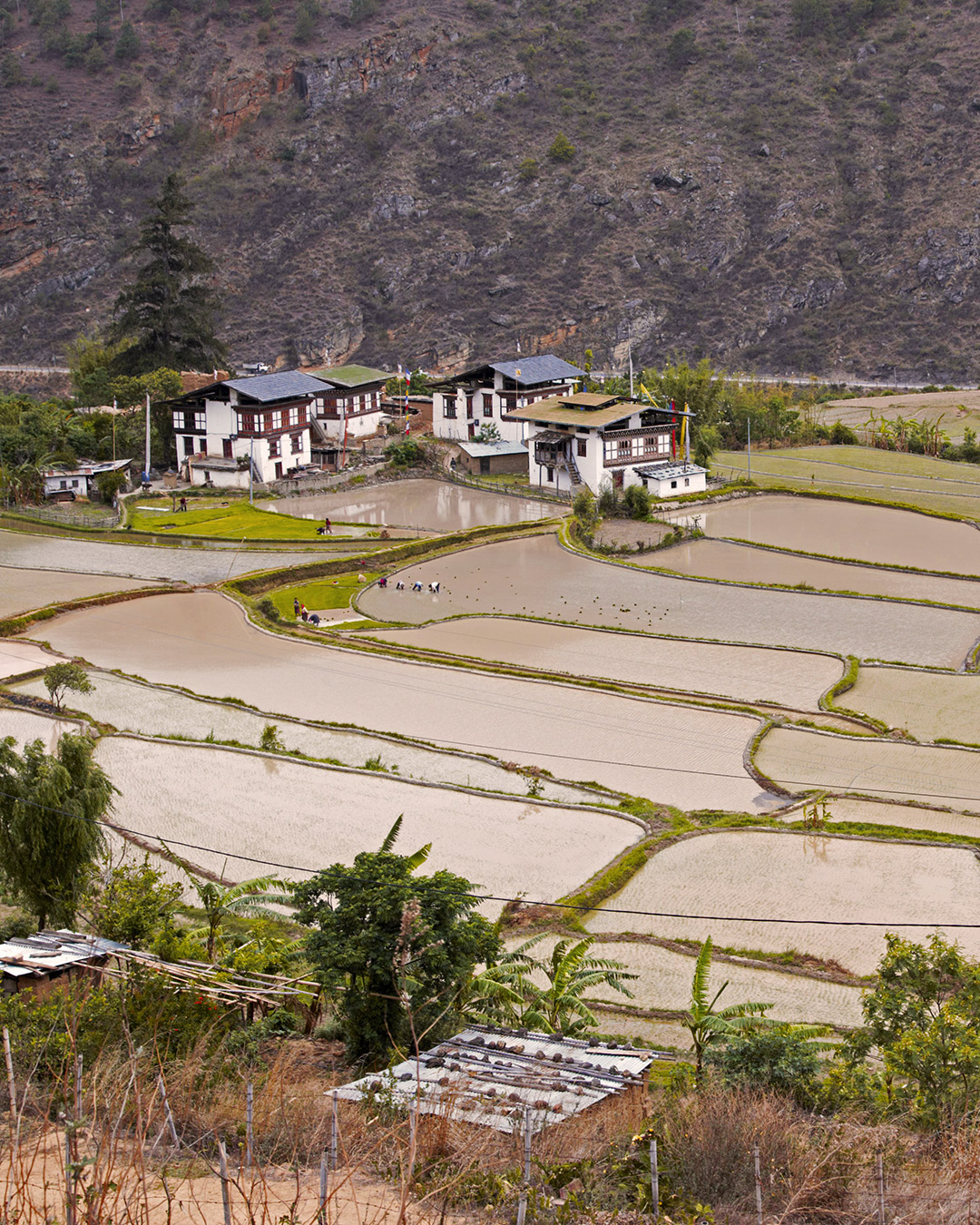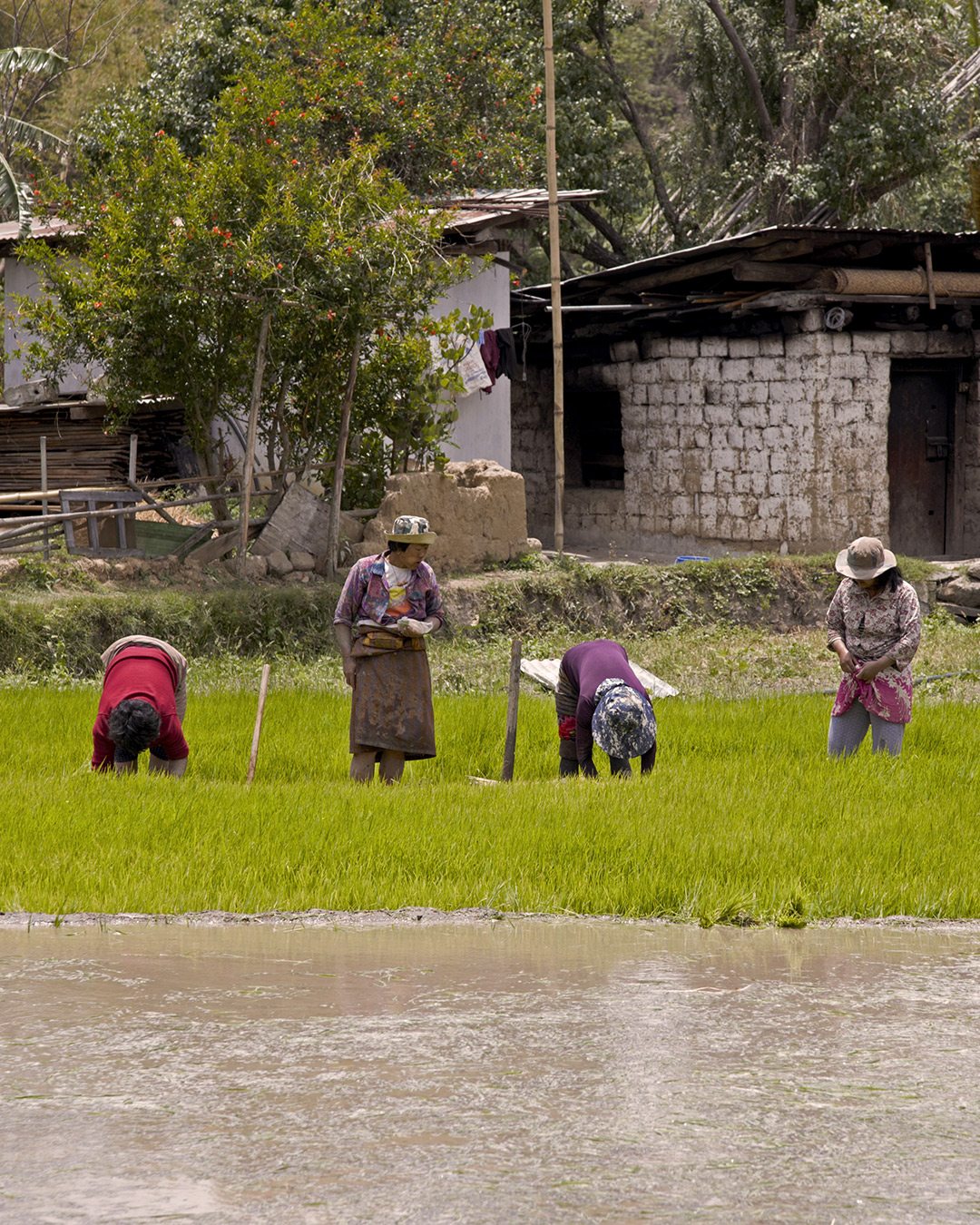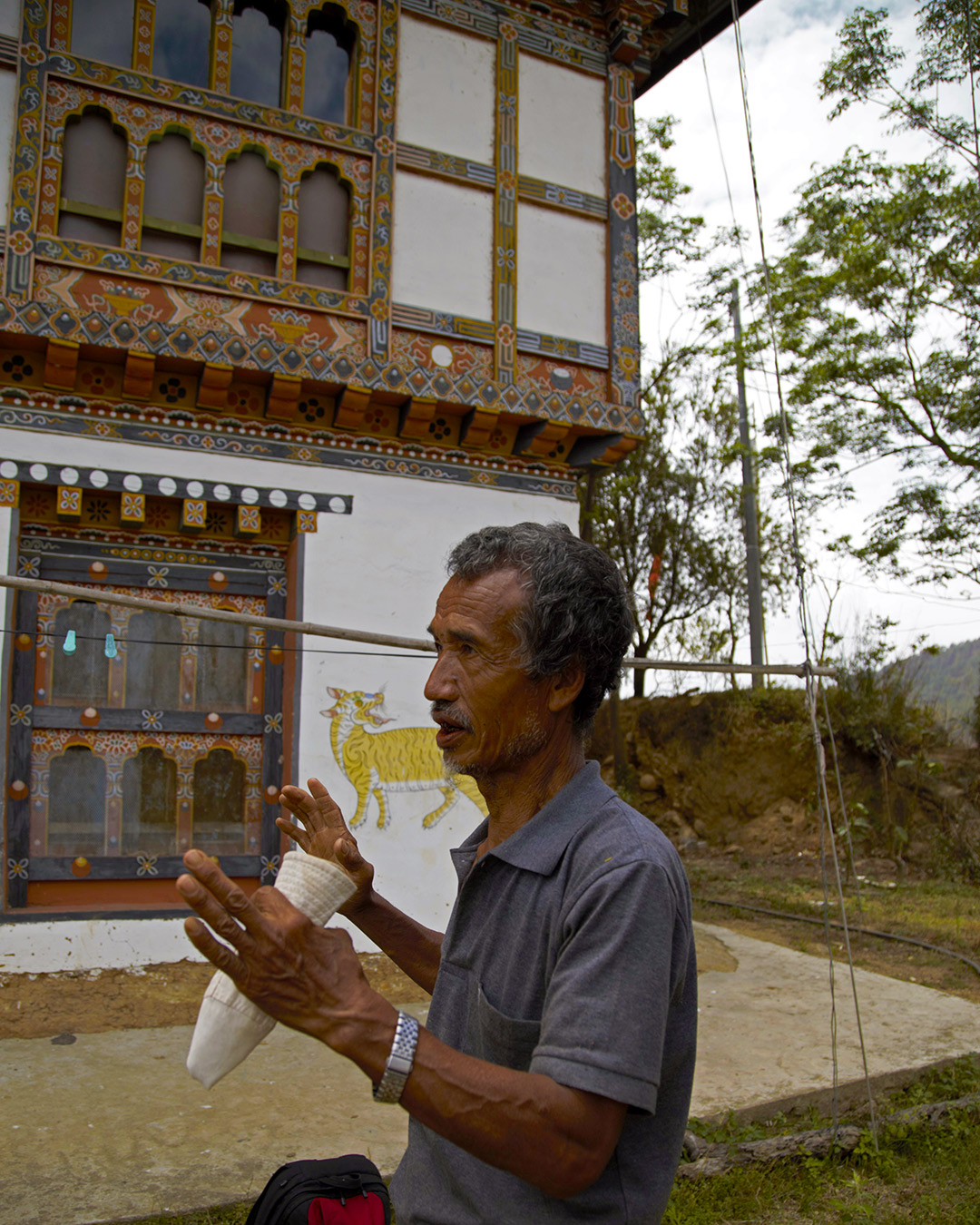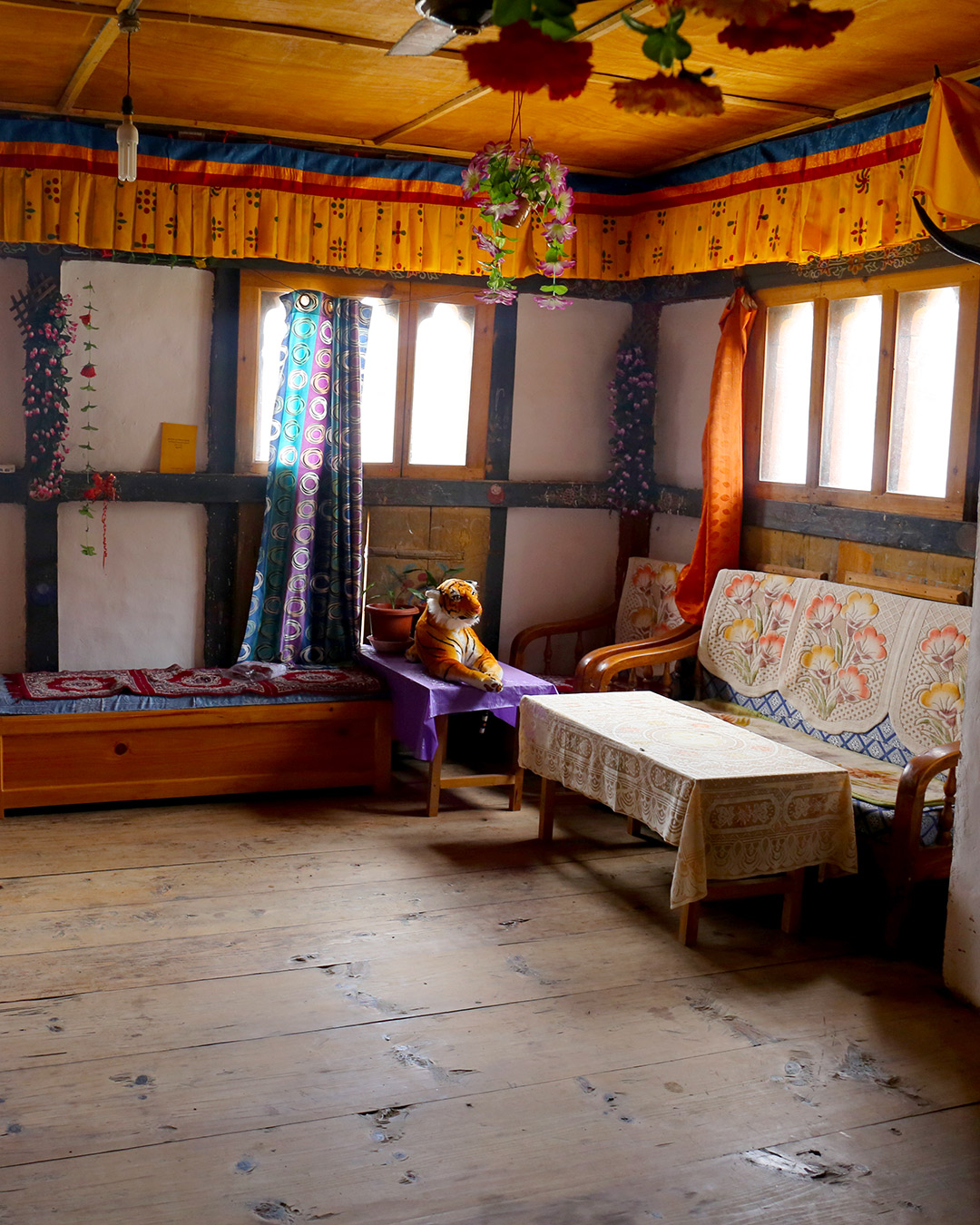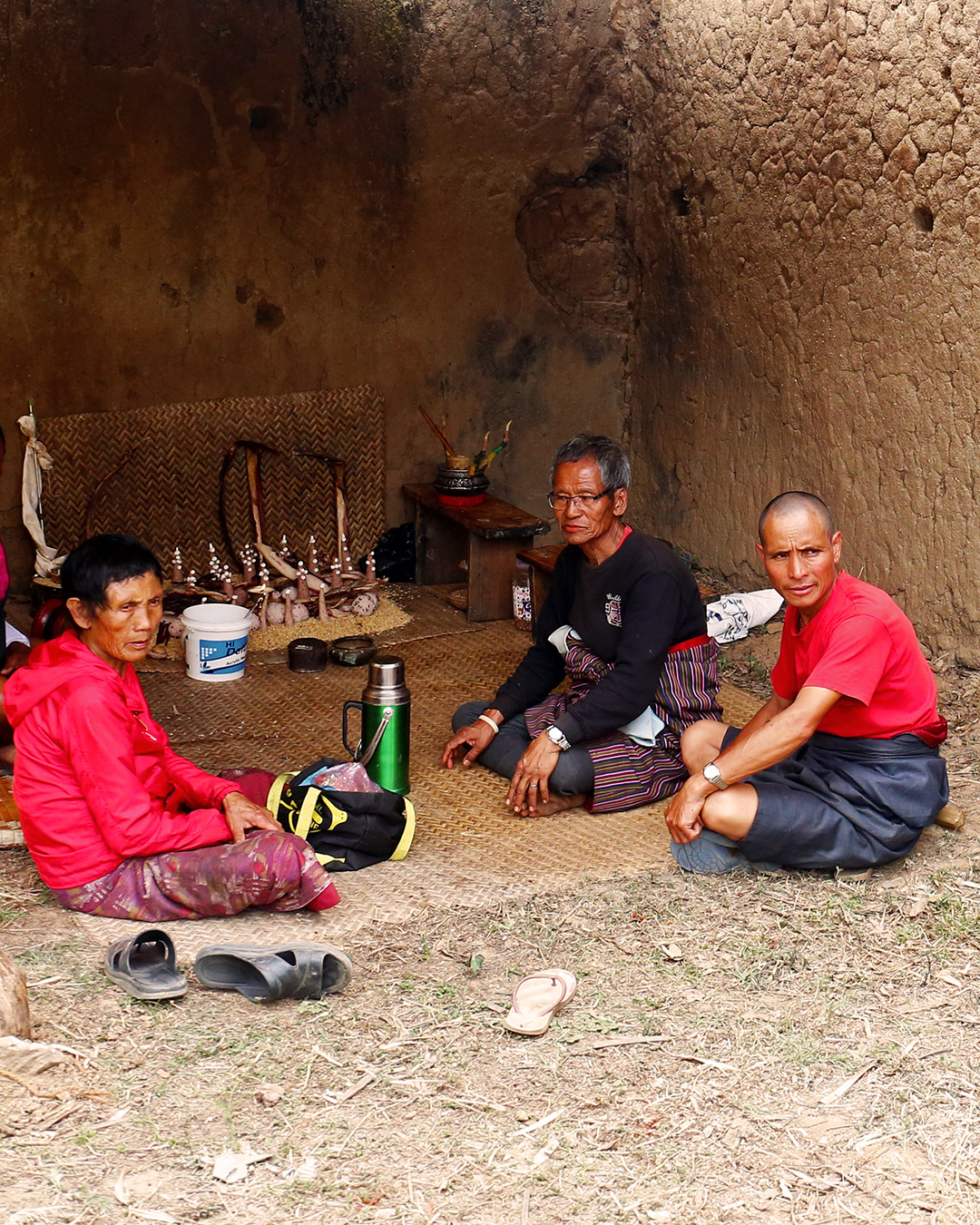Village Life
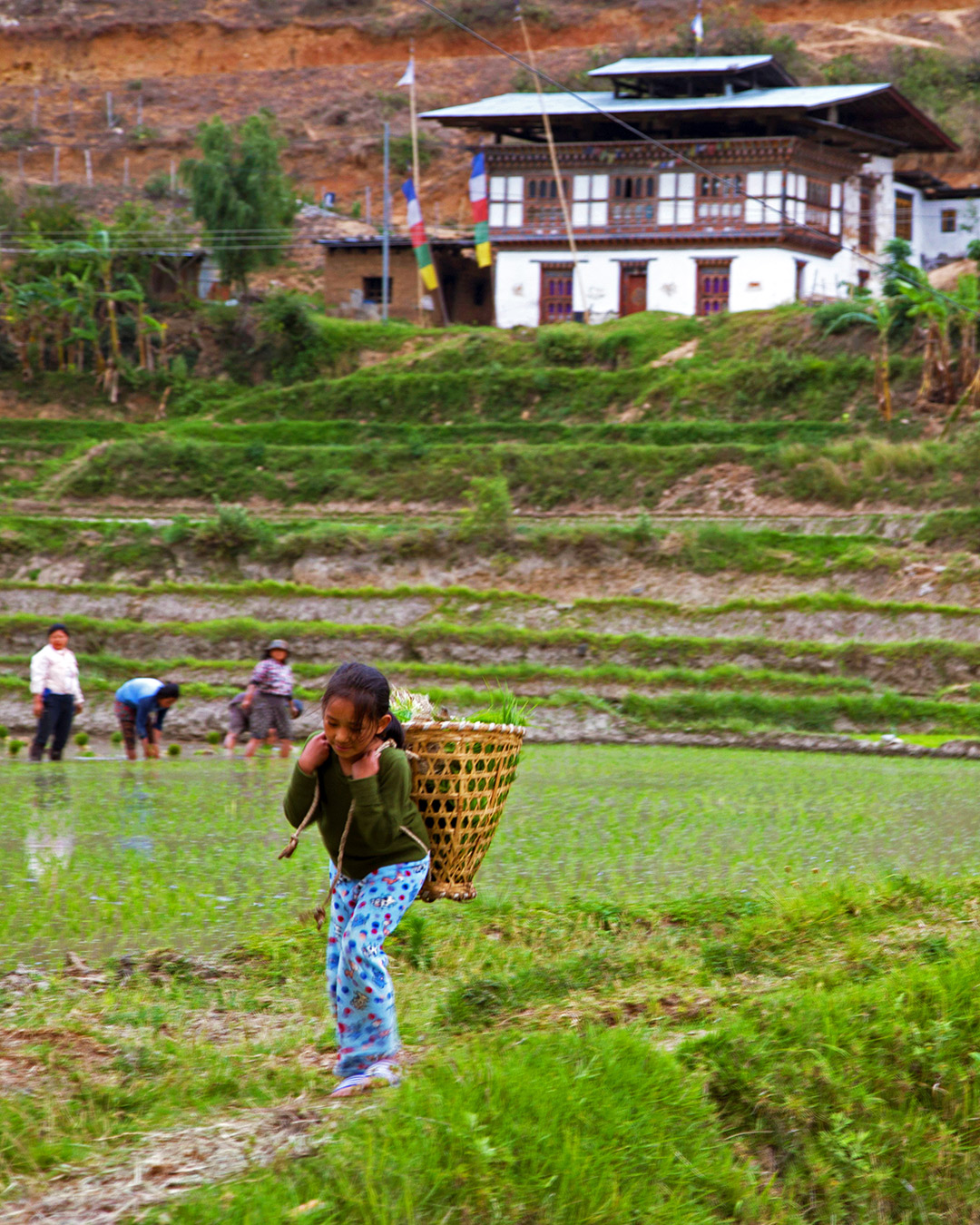
Gyelmo remembers her childhood in her grandmother’s house fondly, but with an undercurrent of hardship and restriction. Gyelmo’s grandmother was the strong matriarch of the family, managing both her home and the fields – sometimes Gyelmo wondered if she ever slept! Every member of the family was involved in the work required to keep everything running smoothly. The day started early, with the chores being divided among adults and children alike. Gyelmo remembers waking up early to fetch water in pots from a nearby stream. Her mother, stepfather and the other adults worked in the fields, while the children prepared food for the animals. The boys took the cows to graze, while the girls, as they were able, were responsible for childcare, milking the cows, churning butter and making cheese. She does not think of the effort in her morning ritual fondly; the bathroom in her city home is one of its most treasured aspects.
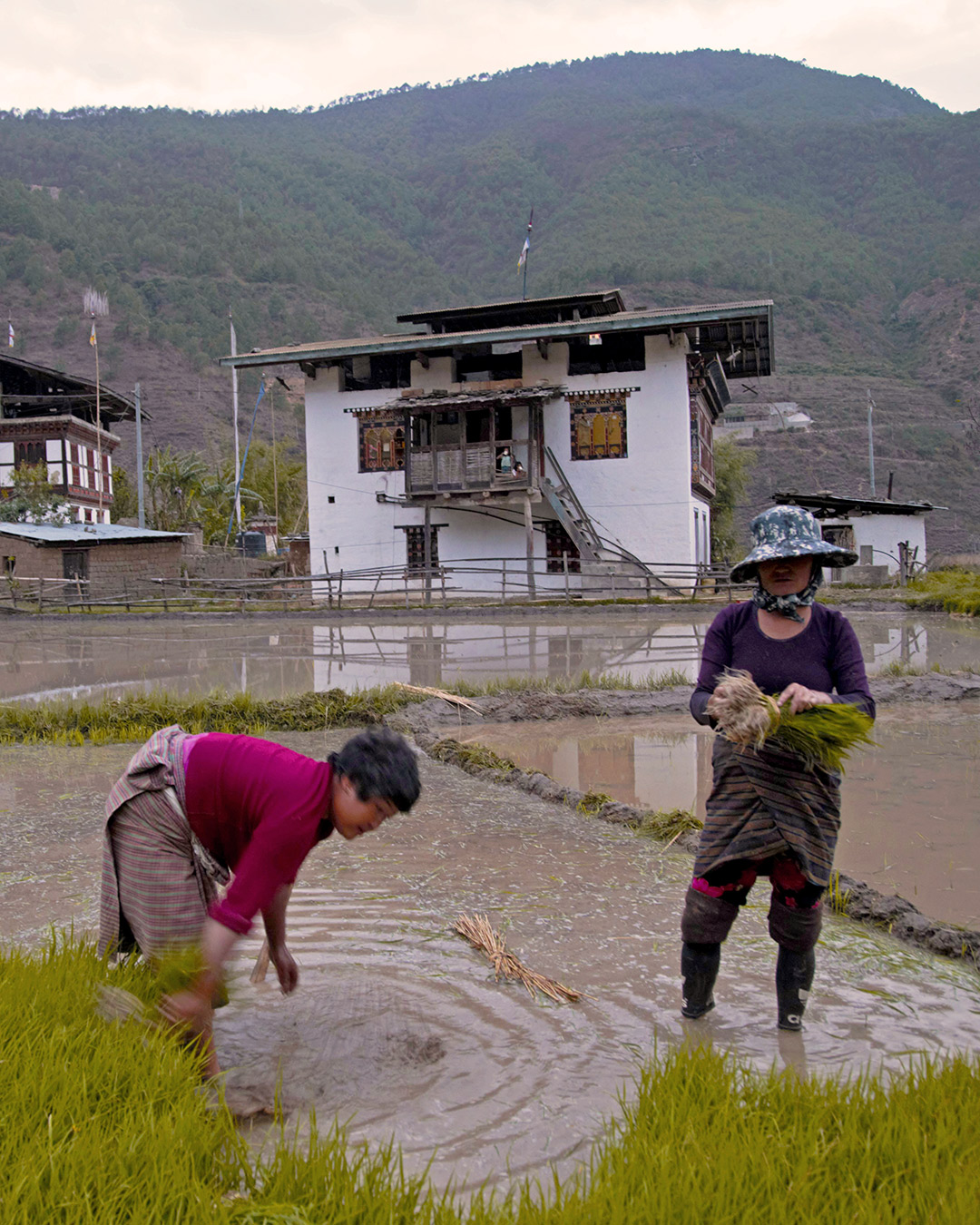
The main house had three rooms on the first level, a large main room flanked by a smaller altar room and a storeroom. The attic above and the store below were used to dry vegetables and meat, and to store grains and the ara brewed by her grandmother. Gyelmo’s most vivid memories of the home are of the single room that the whole family lived in – sleeping, cooking and eating there. The hearth kept the space warm, and the beds were spread out on the floor at night to be rolled away and stowed once day had begun. Cooking activities then took over the space, the women cutting vegetables and cooking rice and meat in a corner of the room. At midday, everyone gathered in a circle, exchanging stories of the morning and enjoying their meal of rice and choem (curry) together. After the day’s work, they sat around and chatted, weaving baskets, stitching or making rope.
At the age of 8, Gyelmo added school to her list of activities – in addition to the daily routine of fetching water, cooking and tending to the animals. Her grandmother insisted on an education as a means to break away from the drudgery of village life, and accompanied her each day on the mud path. The school building itself was small and rigidly formal, as was the instruction. Gyelmo notes that while the school has expanded in size over the years, not much has changed otherwise. Respite from the everyday came through attending festivities at the Wangdue dzongDzongs are the fortress-monasteries of Bhutan and Tibet. The presence of Dzongs across the country symbolizes unification and the recognition of a central authority by the people in the region. Read More, which Gyelmo remembers more for the social interactions than as a spiritual experience. Watched over by adult women, young girls were rarely left unsupervised, indicating that although the society was fairly progressive, fear of male predators was very real.
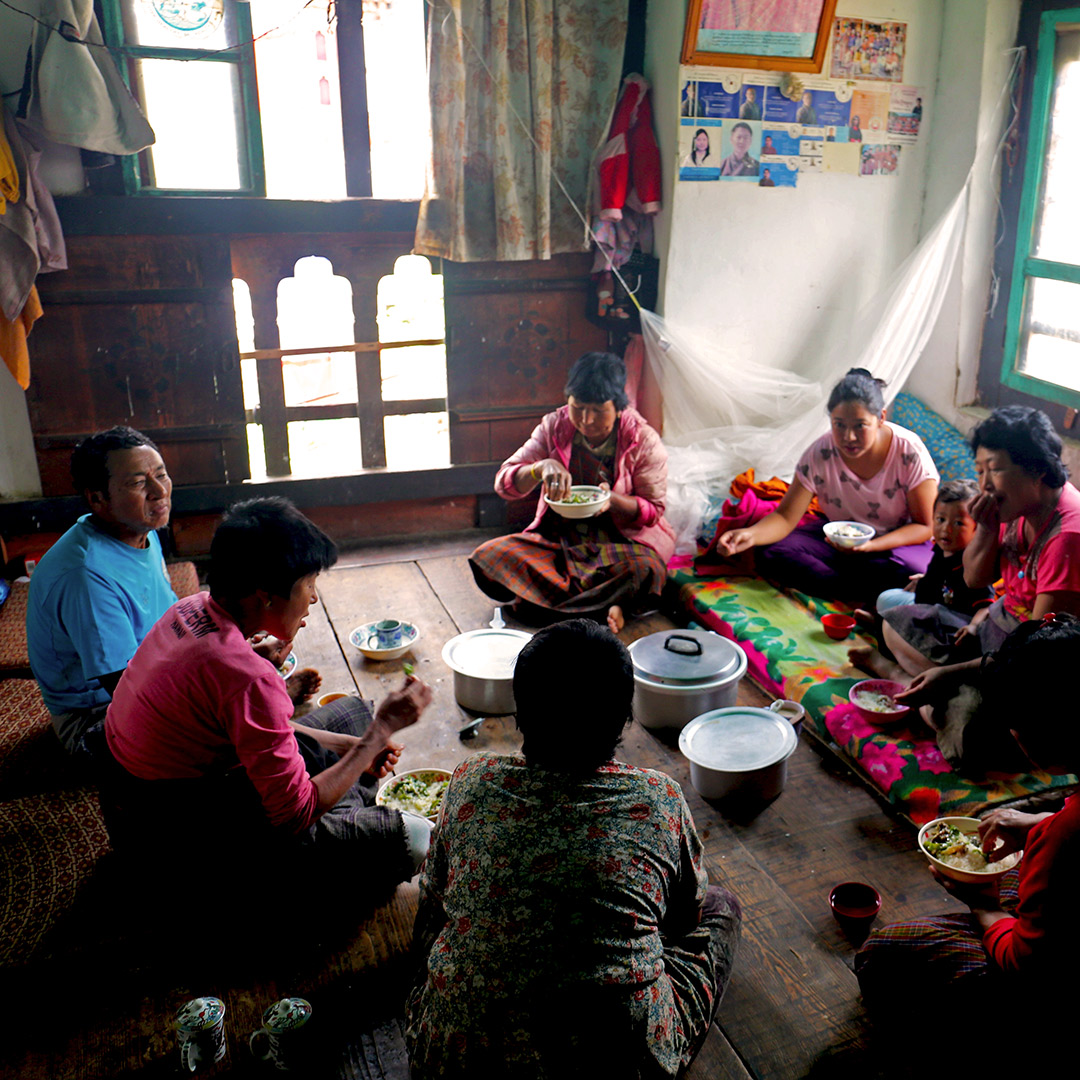
Almost like acts in a play, the changing seasons created different routines for everyone in the village even as they dramatically changed the visual scenery. In the milder winters, village festivals with food, dance and song were held in the fields. Winter was also when families set out on pilgrimages, both within Bhutan and to other Buddhist religious places in India. The annual poojas in each house are still held at this time when they visit each other.
After the winter was when fields were prepared for the sowing season, and the sowing season saw people hard at work from dawn to dusk. Apart from grains, the family grew vegetables that were in demand in the market – spinach, spring onion, tomatoes, chillies and coriander, to name a few. The vegetables were harvested the day before the weekend market, and sellers would set out before daybreak to set up their stalls. Sometimes they sold their produce in the nearby army quarters, or went door to door selling fresh greens after a day at school
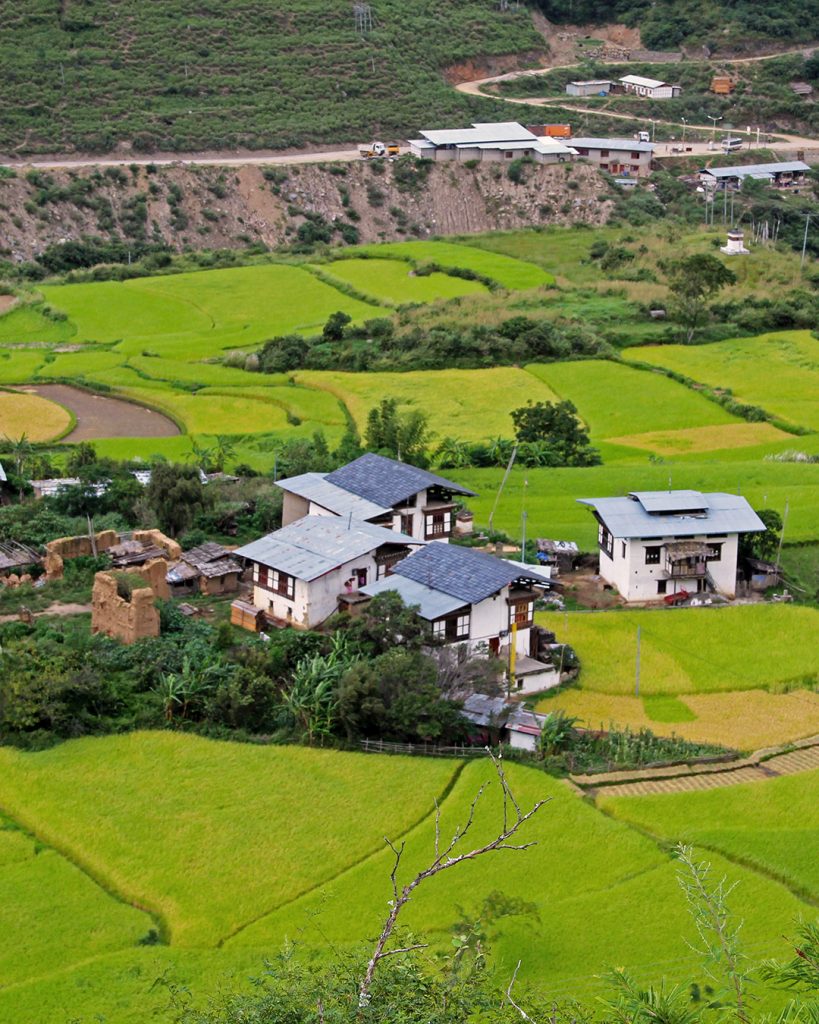
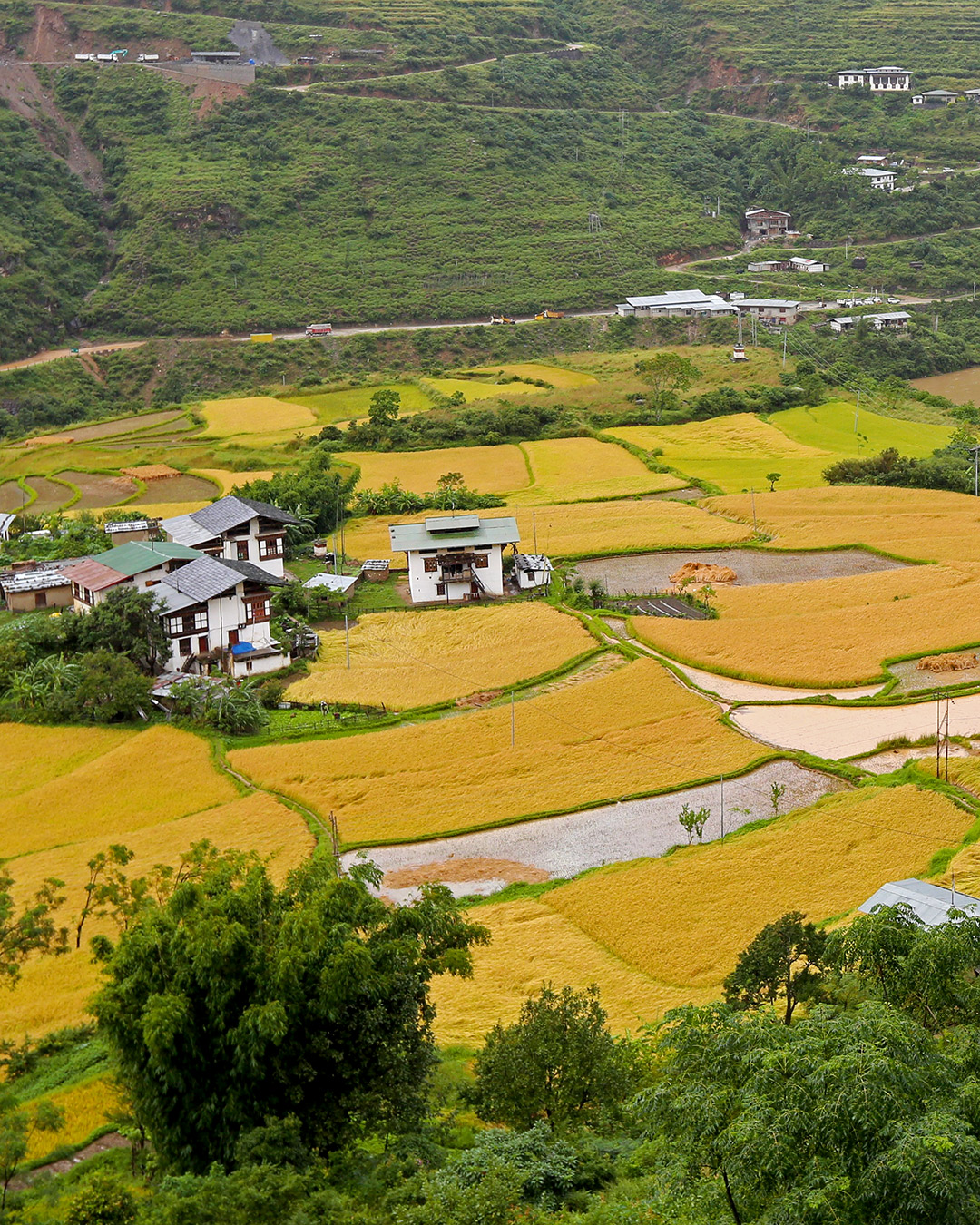
Gyelmo’s grandmother passed on a few years ago, and the house is now occupied by her mother’s older sister. The routine has changed little since her days as a child – young girls carry babies on their backs and help with the sowing season, rows of women sing as they replant in the field. While the fields belong to individual families, they work together in all the fields by turn, one house taking the responsibility to feed the group. With fewer hands on the farm these days, vegetables are mostly grown for self-consumption. Many families receive money from younger members in the city, choosing to purchase what was once grown.
The village has progressed very marginally since Gyelmo first left, and each time she visits she is struck by the hardship and lack of opportunity, and the need to conform to a narrow view of the world. In retrospect, she would not want to return to that life. This is a sentiment shared by many people of her generation, who prefer the relative ease and comfort of a modern lifestyle to a life of drudgery in a rural environment.
Vignettes
